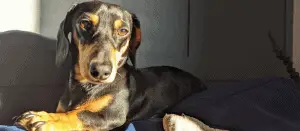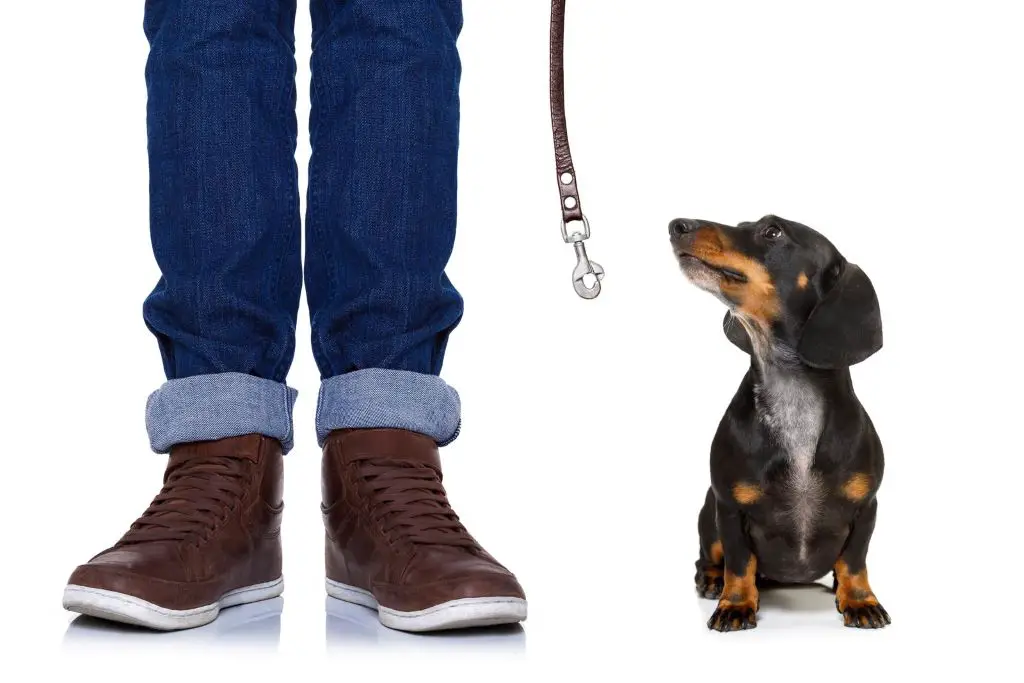Warning: Trying to access array offset on value of type bool in /home/u778996160/domains/dachshundtalk.com/public_html/wp-content/plugins/wp-word-count/public/class-wpwc-public.php on line 123
Warning: Trying to access array offset on value of type bool in /home/u778996160/domains/dachshundtalk.com/public_html/wp-content/plugins/wp-word-count/public/class-wpwc-public.php on line 123
As a dog owner, your top priority is keeping your dog safe and healthy, especially when you have a new puppy that’s susceptible to diseases as they’re maturing. Puppies need to be taken to the vet often to get checkups and vaccines to prevent the catch and spread of an illness. One of the most common but worst illnesses puppies can get is Parvo.
To keep your dog safe from Parvo, which is short for parvovirus, read through this article and follow the tips we provide. The last thing you’d want is a trip to the vet while your dog struggles with this disease.
What is Parvovirus?
Parvovirus is a highly contagious disease that infects canines. This disease can be deadly in the worst cases and most commonly affects puppies. Apartment complexes and dog parks are common places where dogs come into contact with the parvovirus due to the frequent visitation of other dogs that could potentially be carrying the disease.
Evidence backs up that Parvo can live on dirt and organic matter for as long as a year and is resistant to most cleaning products. There are parvo vaccines available for your pup once they reach a certain age, which we’ll cover, and there are prevention measures you can take as the owner to keep your dog safe and healthy.
How to Prevent Parvovirus
Parvovirus is a difficult and scary disease to deal with, but we have some measures you can take and methods to try that are known to help in protecting your dog from parvo. Follow these carefully and be sure that you’re airing on the side of safe. It’s better to be safe than sorry, as it’s said.
Vaccinate your Puppy

The best way to protect your dogs from parvo is to give them an official parvovirus vaccination at the vet. Puppies need to wait until 6 to 8 weeks of age, and boosters could be given at 16 weeks to maintain immunity against the virus.
In total, you can get your dog 3 boosters, and by this point, you shouldn’t have to worry about Parvo anymore. Getting the right vaccinations for your dog is important no matter the type of vaccine, so talk to your doctor about timing and stay up-to-date with vaccinations for your puppy.
Avoid Public Areas
If your puppy has not yet been vaccinated, keep them away from public areas, especially where other dogs play and use the bathroom. These areas are spots that are most likely to give your puppy parvo. During this time, let them use a puppy pad for using the bathroom and give them exercise indoors by playing with toys or throwing a ball.
You’ll need to wait until the 22-week mark to take them outside. It’s disappointing not to be able to take your dog outside to play, so get the vaccination for your dog as soon as possible so that you won’t have to be overly cautious anymore.
Stay Away from Other Dogs
Keep yourself, as well as your puppy, away from other dogs. It makes sense that your puppy should stay away from carriers of the diseases, but why should you, a human, stay away? Humans are transmitters of the disease as well, and you could bring the virus into your apartment without knowing. Keep your distance from other dogs while your puppy isn’t vaccinated.
Disinfect your Apartment
What happens if you touch another dog? It’s a long and sometimes painful process, but you’ll need to disinfect your apartment and yourself. If you suspect that your apartment may be infected, clean everything out in the open with a solution of 12 cups of bleach to 1 gallon of water.
You should also disinfect the bottoms of your shoes and wash your clothes often. Prevention is the best method of stopping the disease, so take the extra step to keep clean.
Avoid the Shared Dog Areas

This method isn’t recommended because it’s risker than the others we’ve discussed so far, but if you live in an apartment complex and you’ve been taking your puppy outside to go potty, it’s crucial to stay away from strips of grass where all the other dogs are taken to go.
These areas are not only areas where parvo can contaminate; they are also breeding grounds for fleas from other dogs and other possible diseases. You don’t want to deal with these, so use a private backyard or a place further away from the public area to take your puppy.
Don’t Take a New Dog Home Without Records
Before taking a new dog home, especially one from a shelter that has been surrounded by other dogs, you’ll need to make sure they’re up to date on vaccinations. Don’t take a new dog home if you aren’t sure what vaccinations they’ve had and if there’s a possibility of them being infected.
This can cause a lot of distress in the future if you realize they have parvo. Before taking your new dog home, get a full report of vaccinations and vet visits, and take them to the vet for a check-up before taking them home.
Know the Symptoms of Parvovirus
Keep a close eye on your dog if they aren’t vaccinated for the parvovirus, and be aware of the symptoms that may show if they’re infected. If your dog has parvo, you may notice low energy, fever, lack of interest in activities, vomiting, diarrhea, constipation or runny feces, or a change in the color of the feces.
When these symptoms are noticed, you need to take your dog to the vet. They’ll give a thorough examination and recommend treatments.
Conclusion
If you follow these procedures, there’s no need to stress about the Parvovirus. It’s good to be aware and knowledgeable about diseases or viruses like these. If your dog hasn’t been vaccinated yet, this should be your top priority when you return to the vet.
You’ll be grateful that you spent the extra time and money upfront to prevent Parvo. Good luck with your new puppy, and stay safe!








